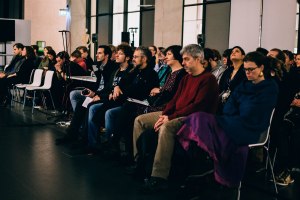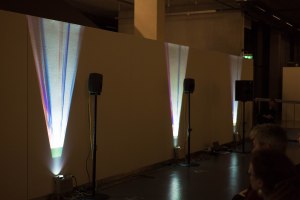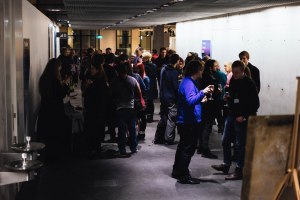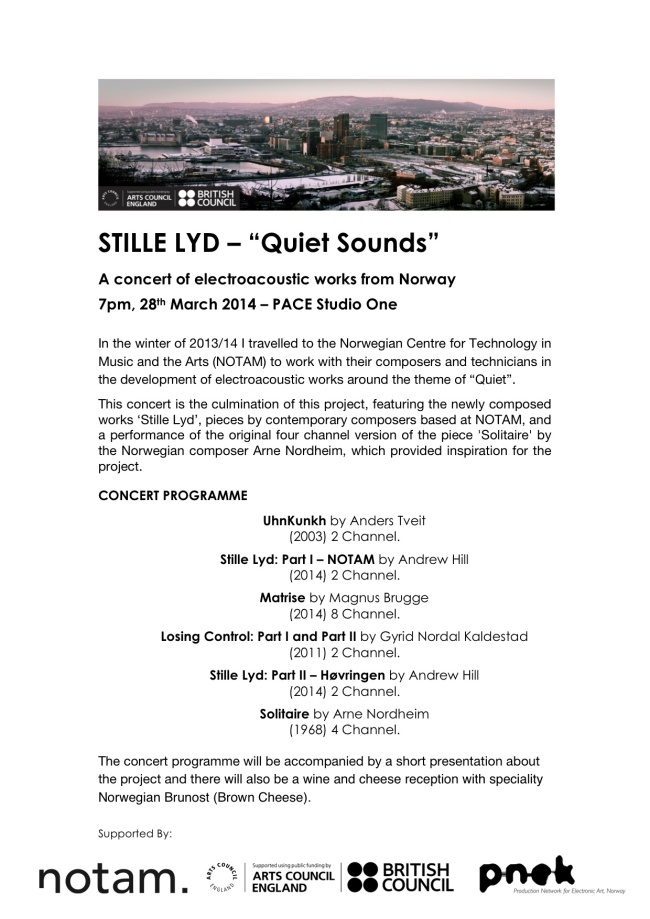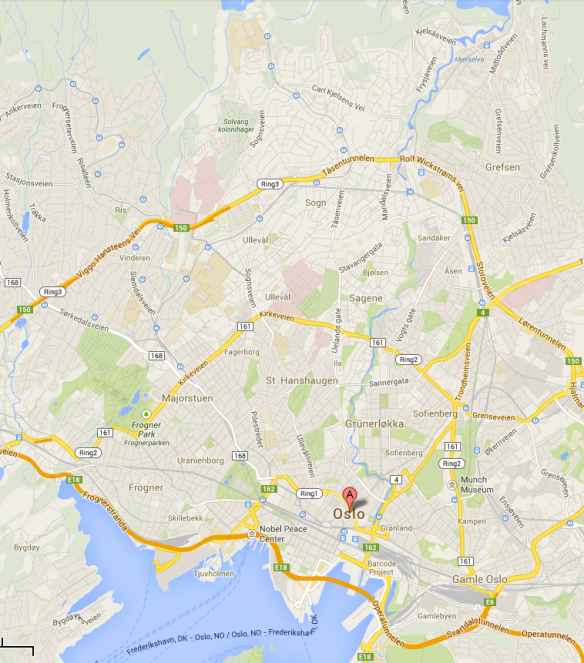Obviously I no longer had the recording kit. Oh cruel fate. Damn you!
- There was a low flying helicopter with its sound being reflected of the buildings in the street.
- A ridiculous car that struggled its way up the hill sounding like it’d lost its exhaust and possibly a few cylinders too.
- Some great tram noises – clacking overhead wires, screeching across points etc.
- And all to a calm and quiet backdrop of Torshov at 10:30pm.
This was my last night in Oslo with an early flight the next day so I was heading back to my hotel to pack and prepare for the trip home.
Is there any GOOD news?
Yes. A completed piece! This evening I tweaked and finalised the initial NOTAM piece, the one that I began on my first visit.
Conversation this afternoon with Gyrid was very good, she told me not to listen to everything that Anders said (he encouraged me to make all of my sounds louder and more assertive*) but comments from both of them about my aesthetic design were very useful and these combined with the time away from the piece enabled me to crack on and make some very important final tweaks to the piece.
Final Changes to the Initial Composition
- I made my quiet sounds quieter again: creaks, reverb-y thuds etc.
- I reined in the pitched and spinning sounds in the second section of the work, to give them more form, development and a trajectory.
- I made the keyboard solo start more cohesively, after a mouse gesture. And end at the climax of the mouse section.
- Major development of the flitting sounds were made (see below).
- And the tolling resonant bells were also shifted at the end of the piece, so as to tie in more naturally with the subtle ebbs and flows in the ambient field recording made outside NOTAM.
Development of the Flitting Sounds
These had all been developed from a single recording, and were simply transposed / time-stretched versions. This changed their spectral content but meant that they retained similar gestural forms (all be it to different durations).
So I dragged out my old favourite, CDP, and used the ‘Scramble’ function to reorder the original gestures, creating a diversity of new flitting gestures. I edited some of these to smooth out any rough gestures (mainly the loud ‘click’ sound from the original recording) and started to assemble these within the piece.
With the new diversity of flitting gestures I was able to really populate this section of the work much more densely than I had previously, and it quickly became clear that these flitting sounds needed to respond and interact with the resonant tolling of this section.
I didn’t however want them to simply respond slavishly to the envelop of the resonant tolling sound. Instead I tried to construct them in a contrapuntal gesture, somewhat like ivy wrapping itself around another plant or a trellis. This created an interweaving texture which, I think, works quite well. And reflects more appropriately the life and energy that was present in the original ‘flit’ recording.
As the resonant tolling section increases in energy so does the pace and intensity of the ‘flitting sounds’ but they retain their independence gesturally, darting about around the resonant tolling sounds and slowly coming back to rest at the end. So perhaps they acted more like the fake snow in a snow globe? With the resonant sound shaking them up, until it resides, at which point they slowly came back to rest.
Final Mastering
On getting back to my hotel room I realised that the whole piece was lop sided. In the Nordheim studio the computer sits to the right hand side of the room whirring furiously away. This had clearly made me compensate by increasing the levels in the right hand channel.
So in final mastering I had to go back in and reduce the right hand level by 10%, in order to rebalance the channels and make the wide acoustic spaces appear more natural. This did have the knock on effect of interfering with the panning in some of the louder more gestural sections (the introductory gestures and the central ‘mouse’ section of the work).
Reflecting at the End
Time will tell wether the work is any good. I think that the piece is probably quite weak structurally. There was no overarching structural idea for the work, instead it evolved and as exploration of individual spaces and rooms within NOTAM, moving from the Studio, to the Offices, to the Kitchen and finally outside on the river.
The many excellent sounds could very easily be used in the development of another work that is devised in a more ordered and planned fashion. But we shall see, I look forward to peoples comments on this work and any pointers they might give which could highlight the sources of my anxiety.
More work could be done, but I am fairly happy with how the work has developed. And here is an ideal time to leave this work and move on to the next.
“that I could do something more does not mean that I have not finished it.”
John Boler (1964) Habits of thought, p.394 – as quoted in Umberto, Eco’s Limits of Interpretation, p.32.




